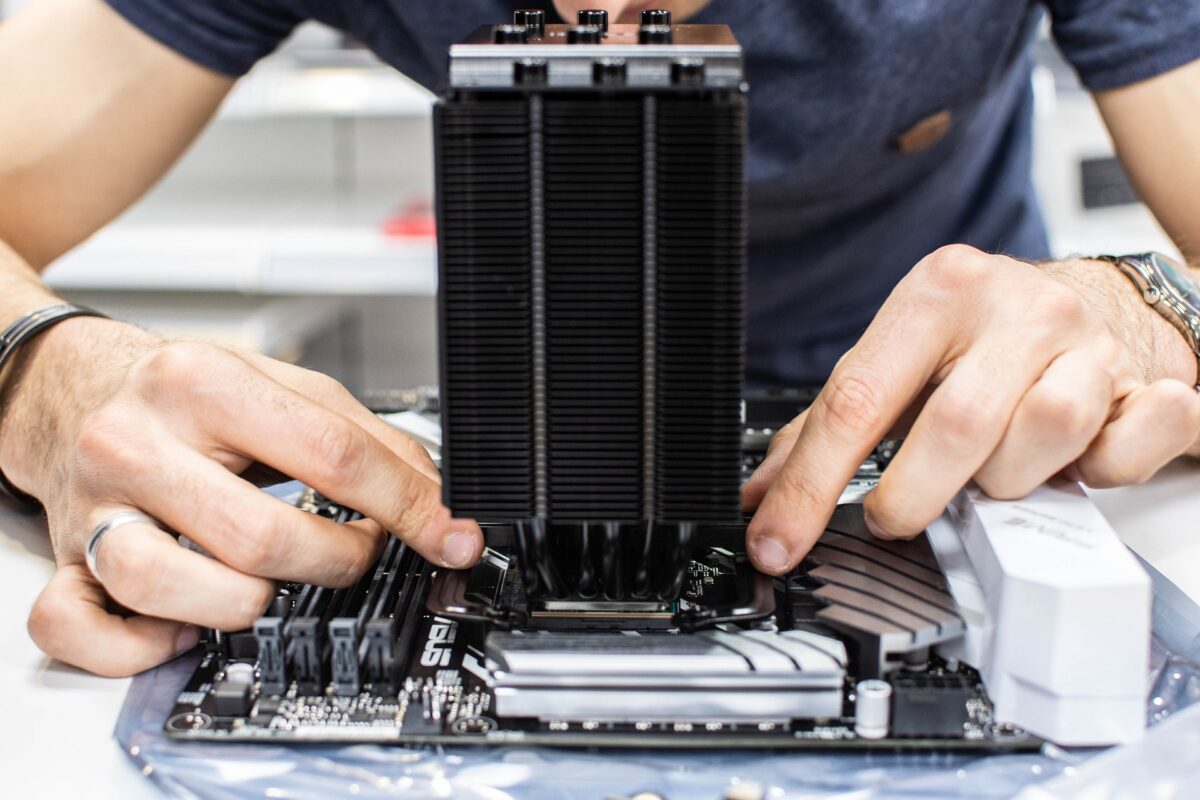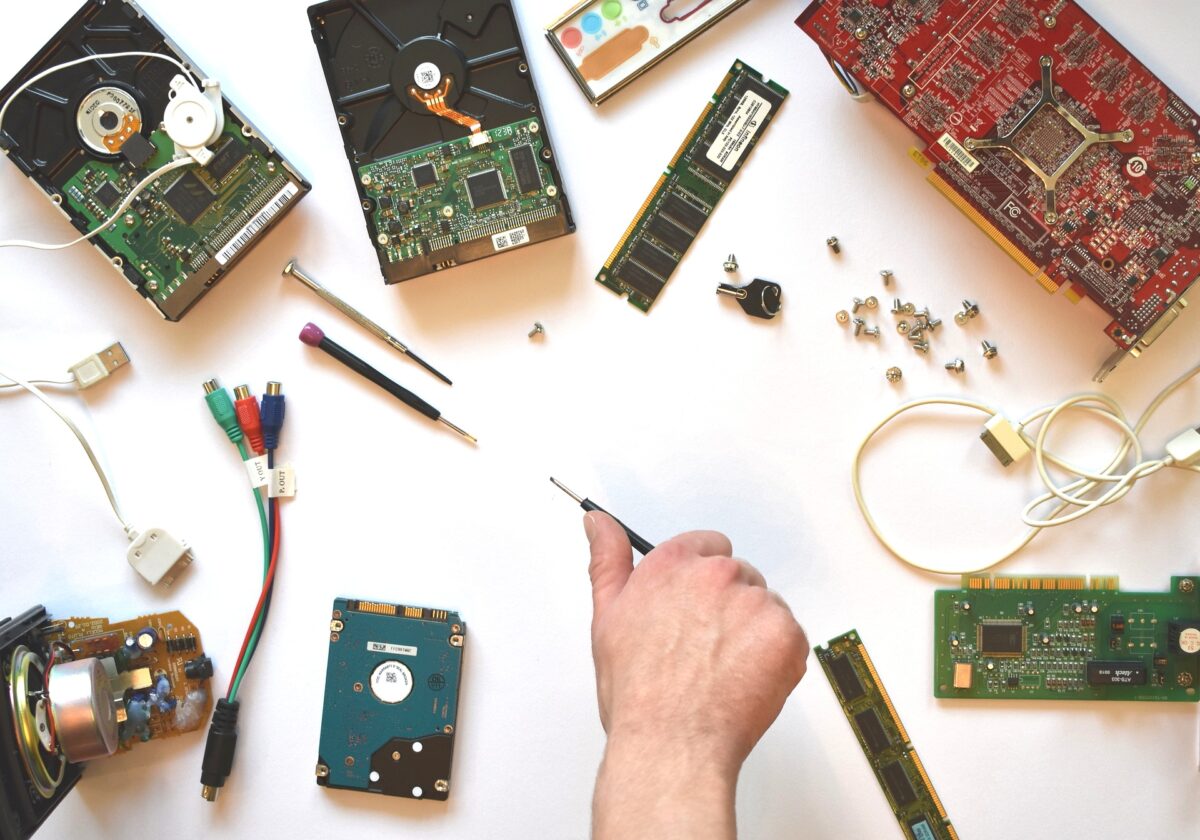
If we talk about computers or information technology, it is inevitable to have two main words on the table: Hardware and Software, a totally necessary binomial to live the user experience that we currently have.
Although they coexist within the same technological nature, they are totally different. That is why we are going to break down each one of them, explain what they consist of, what function they have and what differences we can find.
What is Hardware, with examples
The term Hardware saw the light in the 50 years from the hand of a group of computer engineers to refer to the physical components that we can find in a computer, so everything that is tangible would fall within this group.
Is the foundation base on which the software is based to be able to function and its beginnings date back to 1945 whose operation was based on vacuum tubes. Their evolution has been constant, finding a huge difference between the first components and what we have available today.
Within the general concept of Hardware, we can make two subgroups that would be the internal components, which would include those present inside a tower or laptop case and external components, which would be those located outside the box and can be used or require an action by the user. This last subgroup is usually found under the name of peripherals.
If we focus on internal components, we can find the following list:
- Processing unit or usually called microprocessor
- RAM
- graphics card or GPU
- motherboard or motherboard
- Refrigeration system
- Storage units
- Power supply or PSU
- Network or audio cards
- disk reading units
In the case of external or peripheral components:
- Monitor
- Keyboard
- Mouse
- Headphones or headsets
- Speakers
- Webcams
- Joysticks or gamepads
Within the entire list of components, those that are essential for the operation of the computer and others that would be optional and/or complementary.
You could say that the minimum components The ones that every computer must have to be able to start up are: microprocessor, RAM memory, GPU (either integrated or dedicated), motherboard, storage unit (hard disk), power supply, monitor, keyboard and mouse.
Let's see a little more in detail each of these main parts.
Microprocessor or CPU
CPU is the acronym for Central Processing Unit and making a parallelism with our human body, it would be the own brain of the computer. It is a very complex component and its task is to process all the instructions of the device, both hardware and software.
Its usual shape is square, compact in size and is installed in the socket of the motherboard. In this aspect, each manufacturer and even each generation has a different socket that is generally incompatible with the previous ones.
Of course, if your job is to process data or commands, how much more powerful our CPU, the faster the computer will run.
RAM
RAM means random access memory, which translated would be Random access memory. In this case we could compare it to muscle that our equipment has since the data of the programs that are executed at the moment are temporarily written in it.
Its operating speed is very high and it is important to have the necessary amount when running programs or games on our computer.
graphics card or GPU
Graphics Processing Unit or UGraphic Processing Unit is the meaning of GPU. Being purists, the name GPU refers to the heart of the graphics card itself, although in general they are used interchangeably to refer to the graphics set available to our team.
Its main task is to provide the image or graphic elements derived from the activity of the computer itself and represent them on a screen or monitor.
We can find two fundamental types of graphics card, known as dedicated or integrated.
In the first case, when we talk about dedicated we refer to the conventional graphics card that is installed in a PCI slot on our motherboard. In the case of the integrated one, we will find the graphics chip housed next to our microprocessor or on the motherboard itself.
Motherboard
Being able to also call it a motherboard gives us an idea of the nature and importance of this component. Is the base on which a computer is later shaped and mounted. It can be found in multiple sizes or formats and they offer a multitude of options and fundamental characteristics for the good performance of our machine.
All the components of the list are installed on it and it is the one that offers us a whole series of expansion slots with which we can update, improve or make our computer more powerful or have greater capacity.
Refrigeration system
A very important element is the cooling system. All the elements that have transistors in our computer generate a quantity of heat. Among them, the two main heat generators are the microprocessor and graphics chip.
Extremely high temperatures can cause our equipment run slowly and in a worst case, it could even damage the components. That is why in equipment with a certain power, a specific cooling or heatsink system is usually used for the microprocessor.
In this section, we can find basic air models or much more advanced liquid cooling sets. Within this group we could also include the tower fans themselves.
Storage units
In order to install the software we will need elements that are capable of saving the data permanently. This is the task of the hard drives that we find in any computer, tablet or mobile phone.
It is an element that has also been evolving, improving its performance and capacity and even the technology used for its construction and operation, so we have mechanical hard drives and solid-state hard drives.
Power supply or PSU
A component that often goes unnoticed but is no less important for that is the power supply. It is the one that provides us with energy for all the internal components of the computer and the optimal functioning of each of them depends on its quality, along with its integrity.
A quality source with a high energy certificate will not only ensure an optimal power supply but also a total protection against a power surge for example, thus protecting our components.
disk reading units
Although every time they are more obsolete, the reading units are still on the market. Like all the other components, they have followed an evolution that has been stagnant for a few years due to the appearance of other means of entering data into our computer.
In this group we find the floppy drives, DVD and BlueRay readers/recorders.
What is software and the different types that we can find
Like Hardware, the word Software began to be used in the 50 years and is used to talk about everything that enters into the computer set but that cannot be physically touched or manipulated.
This group includes the entire set of programs or applications that use the whole of our system to function, communicating with the hardware to tell it what to do or how to function. Its evolution and capabilities go hand in hand with improvements in hardware.
Software Types
In this great family we also find several groups that we could group in the following way.
System software
As the title indicates, it refers to the programs that communicate with the system and thereby exercise control over the Hardware. Operating systems or servers would fall into this group.
Programming software
These types of programs allow us develop an application through programming language.
app software
dedicated to perform a specific task, automatically or assisted by the user, such as video games.



